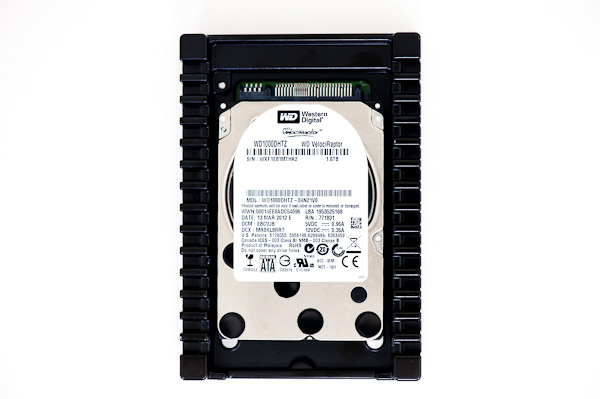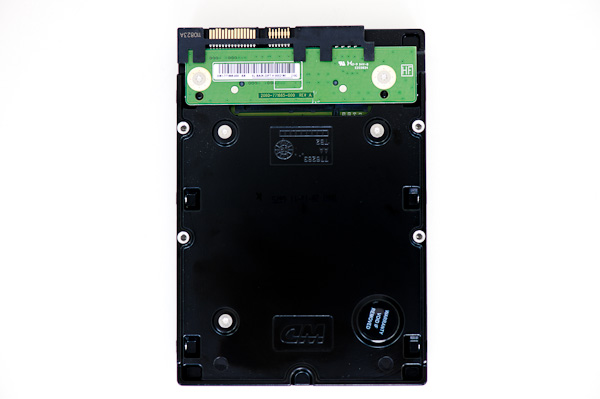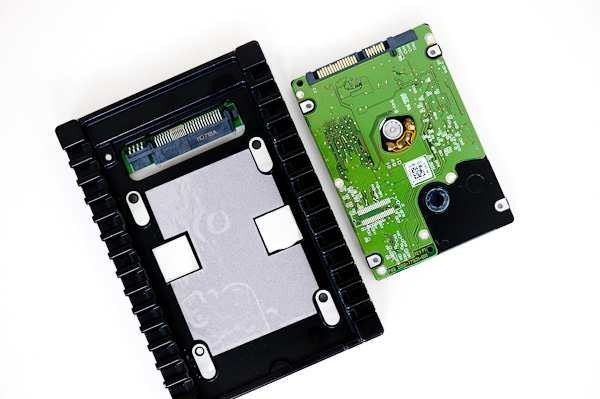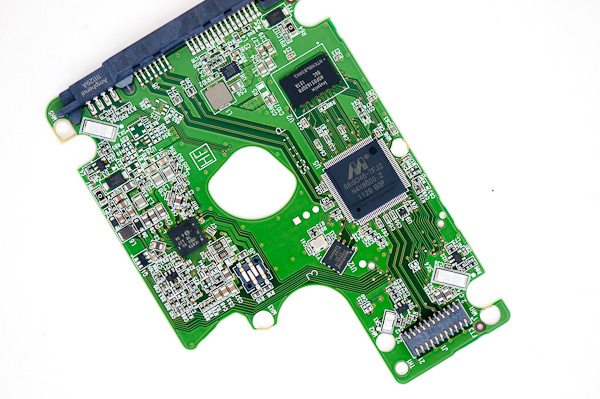Western Digital VelociRaptor 1TB (WD1000DHTZ) Review
by Anand Lal Shimpi on April 16, 2012 8:00 AM EST- Posted in
- Storage
- HDDs
- Western Digital
- VelociRaptor
There was a time when Western Digital's Raptor (and later, the VelociRaptor) was a staple of any high-end desktop build. Rotational media could only deliver better performance by increasing aereal density or spindle speed. In a world dominated by hard drives that focused on the former, WD decided to address both. By shipping the only mainstream (e.g. not SCSI or SAS) 3.5" hard drive with a 10,000 RPM spindle speed, WD guaranteed that if you needed performance, the Raptor line was the way to go.
Two years ago we met the most recent update to the VelociRaptor line: the VR200M. While it raised the bar for the VelociRaptor, WD saw its flagship competing in a new world. SSDs were now more affordable, resulting in even more desktop builds including an SSD. Although the high dollar-per-GB cost associated with SSDs demanded that desktop users adopt a two-drive model (SSD + HDD), for storage of large media files a standard 5400RPM or 7200RPM drive was just fine. After all, moving large files is mostly a sequential operation which plays to the strengths of most consumer drives to begin with.
There are still users who need more storage than an SSD can affordably provide, and who demand speed as well. Although photo and video editing is great on an SSD, a big enough project would have difficulty sharing a 128GB SSD with an OS, applications and other data. For those users who still need high performance storage that's more affordable than an SSD, the VelociRaptor is still worthy of consideration. There's just one problem: Moore's Law is driving the cost of SSDs down, and their capacities up. The shift to solid state storage is inevitable for most, but to remain relevant in the interim the VelociRaptor needed an update.
Today Western Digital is doing just that. This is the new VelociRaptor, available in 250GB, 500GB and 1TB capacities:
| WD VelociRaptor Historical Comparison | |||||
| WD VelociRaptor VR333M | WD VelociRaptor VR200M | WD VelociRaptor VR150M | |||
| Capacity | 1000/500/250GB | 600/450GB | 300/150GB | ||
| Interface | 6Gbps SATA | 6Gbps SATA | 3Gbps SATA | ||
| Advanced Format (4K Sectors) | Y | N | N | ||
| Rotational Speed | 10000 RPM | 10000 RPM | 10000 RPM | ||
| Buffer Size | 64MB | 32MB | 16MB | ||
| Transfer Rate Buffer to Disk | 200 MB/s | 145 MB/s | 128 MB/s | ||
| Platter Density | 333GB | 200GB | 150GB | ||
| Warranty | 5 years | 5 years | 5 years | ||
The basic design remains unchanged. Take a 2.5" drive with platters spinning at 10,000 RPM and pair it with a 3.5" adapter that also acts as a heatsink. Internally the drive gets all of the expected updates. Platter density is now up to 333GB (3 platters for the 1TB drive, 2 for the 500GB drive and 1 for the 250GB). All members of the new VelociRaptor family feature a 64MB DDR3 cache. Combine that with some firmware updates and you've got a recipe for larger capacities and higher performance.
The drive is available today and retails for $319 for the 1TB model, $209 for the 500GB model and $159 for 250GB. These prices are a bit lower than what the VelociRaptor VR200M launched at two years ago (the 500GB is significantly cheaper than the old 450GB launched at).
| WD VelociRaptor Lineup | ||||||
| WD1000DHTZ | WD5000HHTZ | WD2500HHTZ | ||||
| Capacity | 1TB | 500GB | 250GB | |||
| MSRP | $319.99 | $209.99 | $159.99 | |||
| Cost per GB | $0.319 | $0.419 | $0.639 | |||
Compared to standard 3.5" drives, the VelociRaptor is quite expensive. You can buy a 3TB 7200RPM drive at roughly $0.06 per GB, compared to $0.319 per GB for the most cost effective VelociRaptor. Compared to an SSD however, the VRs are still cheaper - although not by a ton if you compare to a low capacity drive. Samsung's SSD 830 (128GB) will cost you $1.36 per GB.














92 Comments
View All Comments
Stuka87 - Monday, April 16, 2012 - link
Seagate would disagree. As they Hybrid drives are nearly as fast as an SSD but have a terabyte of storage.kmmatney - Monday, April 16, 2012 - link
I'm pretty surprised at how far behind the Seagate Momentus XT is in these benchmarks, though. This review doesn't make the Seagate look very good at all.exordis - Monday, April 16, 2012 - link
IIRC from the Momentus XT review it's performance on the first run through of a given benchmark was basically the same as any other HDD of the same specs. Because of the way it learns common tasks and caches the things you do often it requires a couple of runs of a given task before it's extra performance shows.Samus - Monday, April 16, 2012 - link
I not only disagree as well with Makaveli, but can't help but think what a failure it is on WD's part to ignore making this drive a hybrid like the Momentus XT.Remember, the Momentus XT isn't tweaked for performance, it's an extremely low power (5-watt) drive that needs to meet the cooling envelope of a laptop drivebay.
The Raptor doesn't have those restrictions. If this drive were paired with 8 or 16GB NAND, it would have been a monster, essentially a 1TB SSD for <$400.
The problem must be WD knows nothing about hybrid technology. They can't possibly be foolish enough to ignore the fact that SSD's are the future and hard disks can't survive by only having superior capacity and lower prices. They need to have high performance and reliability as well.
This launch is a complete disaster. This could have been exceptional if adapted to the times. A 10k performance-oriented drive using Hybrid-NAND technology could have been amazing.
kyuu - Tuesday, April 17, 2012 - link
/agreeThe only problem is that they'd have been starting from scratch with the caching algorithms and other things that go along with a hybrid HDD. Remember how much of a disaster Seagate's 1st gen hybrid HDDs were? Part of what makes the Momentus XT great is the experience Seagate has with the hybrid HDD platform, which no other manufacturer really has.
TeXWiller - Tuesday, April 17, 2012 - link
I'd prefer to keep those SSD caches directly attached to the PCIe bus and have a more knowledgeable operating system.The reliability numbers are quite good, so on paper this would be the most reliable 1 TB consumer oriented rotating hard drive. This way the launch is not a disaster as drives with equivalent theoretical reliability are hard, or much more expensive to buy from the online store near you.
Samus - Tuesday, April 17, 2012 - link
I've replaced a number of Raptors through almost every generation in mail servers and SQL servers that receive a lot of constant traffic within warranty.That would never happen with an SSD, where you can do 20GB/day for 5+ years.
mercutiouk - Tuesday, April 17, 2012 - link
One thing you COULD do with this is throw it in the intel rapid storage raid 5 setup. Sit the fastest 40GB SSD you can find (or a partition of a larger SSD of course) with 4 of these behind it.While not cheap (you'd need to drop about 1k on your storage alone) you'd be looking at 3TB of "rather quick" storage that could suffer a drive failure and keep things together.
4x 200MB sustained (so about 550/600MB once the raid 5 etc has dampened performance a bit) with an SSD doing all the responsive bits of access the raid had to deal with would make an impressive setup.
I run a hardware raid-5 with an SSD for boot at the moment and it's rather nice for most things.
GreenEnergy - Monday, April 16, 2012 - link
Microsoft actually got a fine picture on my HDs are such a huge bottleneck in todays PCs.http://blogs.msdn.com/blogfiles/e7/WindowsLiveWrit...
glasspelican - Monday, April 16, 2012 - link
I am supprised that thy dont have any flash on this drive. I got the momnentus xt in my laptop and it makes a huge difference